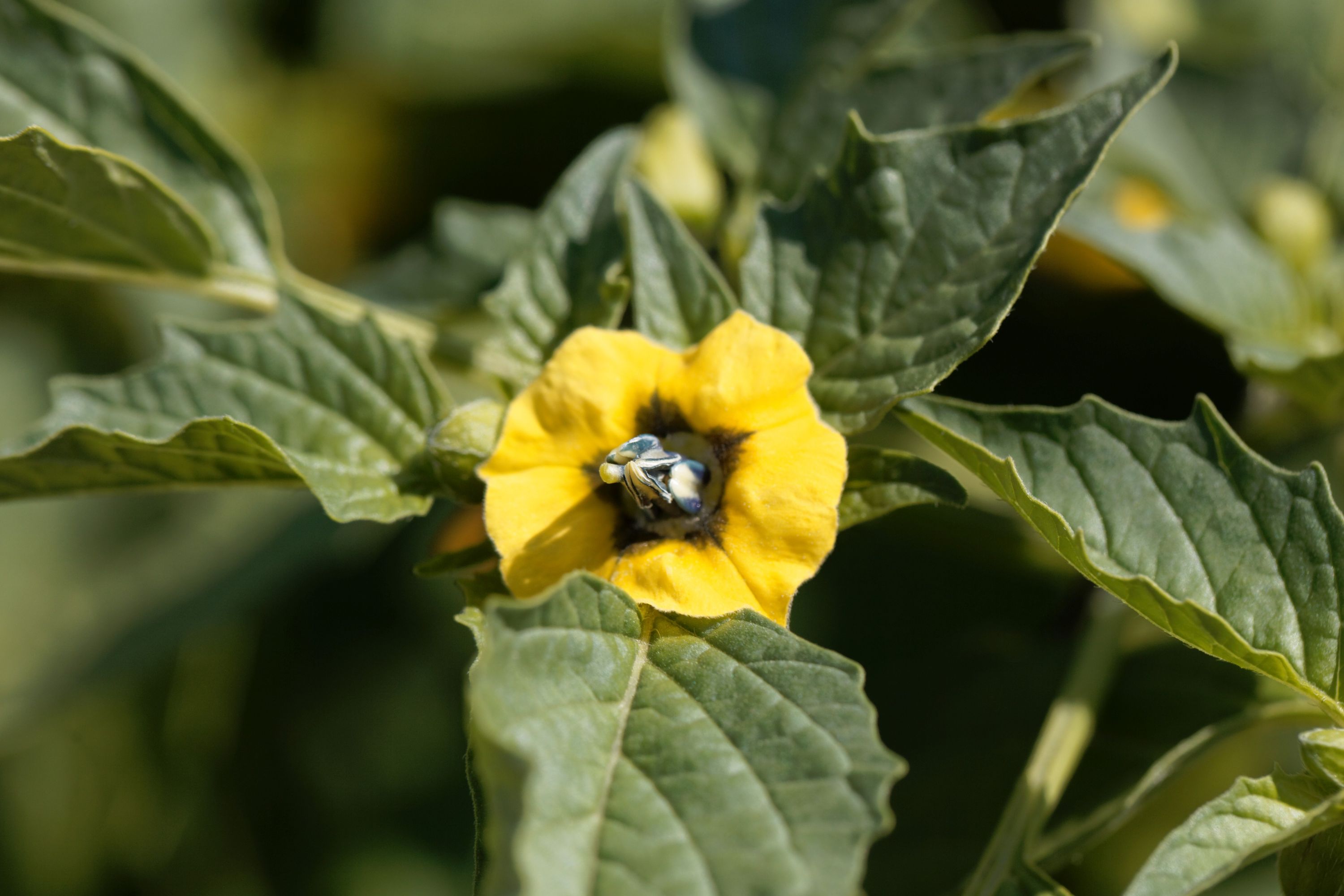Tomatillo
(Physalis philadelphica)

Description
The tomatillo (Physalis philadelphica and Physalis ixocarpa), also known as the Mexican husk tomato, is a plant of the nightshade family bearing small, spherical and green or green-purple fruit of the same name. Tomatillos originated in Mexico and were cultivated in the pre-Columbian era. A staple of Mexican cuisine, they are eaten raw and cooked in a variety of dishes, particularly salsa verde. Tomatillos are native to Central America and Mexico. The plant is grown mostly in the Mexican states of Hidalgo and Morelos, and in the highlands of Guatemala where it is known as miltomate. In the United States, tomatillos have been cultivated since 1863, with one dubbed "jamberry" in 1945 and others with the names "Mayan husk tomato" and "jumbo husk tomato". Further distribution occurred in the Bahamas, Puerto Rico, Jamaica, and Florida. By the middle of the 20th century, the plant was further exported to India, Australia, South Africa, and Kenya. The wild tomatillo and related plants are found everywhere in the Americas except in the far north, with the highest diversity in Mexico. In 2017, scientists reported on their discovery and analysis of a fossil tomatillo found in the Patagonian region of Argentina, dated to 52 million years BP. The finding has pushed back the earliest appearance of the Solanaceae plant family of which the tomatillo is one genus. There is limited information about tomatillo production, even though tomatillos are distributed and grown worldwide as a home-grown garden plant. Tomatillos are mainly cultivated in outdoor fields in Mexico and Guatemala on a large scale. Smaller crops are planted in many parts of the United States. In Mexico, tomatillos are planted within a wide range of altitudes. Tomatillos are a key ingredient in fresh and cooked Mexican and Central-American green sauces. The green color and tart flavor are the main culinary contributions of the fruit. Purple and red-ripening cultivars often have a slight sweetness, unlike the green- and yellow-ripening cultivars, so generally are used in jams and preserves. Like their close relative the Cape gooseberry, tomatillos have a high pectin content. Another characteristic is that they tend to have a varying degree of a sappy, sticky coating, mostly when used on the green side out of the husk.
Taxonomic tree:







